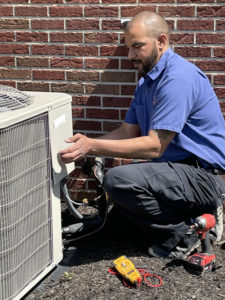Easy AC fixes
It’s finally here—S-U-M-M-E-R!
While it’s been pleasant and cooler than normal, homeowners are flipping the AC switch to stay cool on those warmer days and control indoor air quality. But what happens when you hit O-N and N-O-T-H-

Don’t panic! Here are a few things to check first. If these don’t work, then panic and give us a call.
1. Check your thermostat. Is it on? Are the batteries working? If they’ve lived a good life, change them to see what happens. Often fresh batteries allow the system to hum along and cool your home. If the thermostat screen is blank, this is the likely cause. Easy!
2. When is the last time the filter was changed? This is sometimes the cause and a simple fix. Follow the manufacturer’s suggestions to change your air filter. Timing varies. Some are monthly, others every three months, while some are reusable and should be cleaned when they are dirty. One way to determine if a filter needs to be cleaned is to check if any light passes through it. If not, it’s time to clean it. Dirty filters not only reduce the flow of air but can also cause the AC unit to freeze.
3. Take a look at your fuse box and/or breaker. The breakers and fuses safeguard the AC unit’s motor or compressor from overheating. Often when a motor dies, one of the first parts the HVAC technician checks is the breaker. If this is the case, you’ll need to call a tech to check your system.
4. Is air blowing out of the vent? If it’s warm (and yes, this is super obvious), check the thermostat temp. We’ve seen programmable thermostats reset (refer to #1 when the batteries change) and have temps set at 80. Homeowners don’t realize it and think their system is malfunctioning.
5. Check the outside unit for obstructions. If the outdoor unit’s fan is entirely obstructed by debris, branches, or a fence you built to hide it, the unit might not be able to inhale, meaning the cooling process never takes place. This is another easy fix: clear the blockage.
If the system still isn’t working for you, it’s time to call in a tech to diagnose the problem.
And we always recommend homeowners have a system tuned up twice a year to catch any problems before they start.
